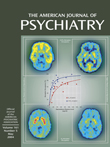Characteristics of Functional Auditory Hallucinations
Mr. A, a 35-year-old man who had suffered from schizophrenia since his early 20s, was referred for assessment of refractory auditory verbal hallucinations. He was taking quetiapine, having previously been given several other antipsychotics, including clozapine (which was discontinued after a generalized tonic-clonic seizure and neutropenia). No pharmacological treatments had resulted in significant attenuation of his auditory hallucinations (the predominant clinical symptom of his illness).The most salient hallucinated voice was perceived solely when Mr. A simultaneously heard real engine sounds from motor vehicles. The engine sounds and the voice were perceived as “in parallel.” The “engine voice” spoke to him in the second person, uttering frightening statements such as, “I’ve got hell for you.” The timbre of this voice was mechanistic, like the accompanying engine sounds, and lacked human characteristics, such as gender or accent.Another hallucinated voice occurred simultaneously with actual speech uttered by television announcers. The semantic content was the same as that of the “engine voice,” but the “television voice” sounded human, exactly like the real voice of the television announcer who was speaking at the same time. For example, the “television voice” was often described as sounding like an adult woman with a northern British accent and “serious” emotional prosody.A third variant of Mr. A’s functional auditory hallucinations occurred when he played his electric guitar. Single hallucinated words accompanied the playing (and perception) of each individual musical note. These words were in a seemingly random order, without apparent semantic features. Like the “engine voice,” the “guitar voice” lacked human attributes but instead sounded like an electric guitar. For example, if Mr. A played a musical scale, then he would hear hallucinated words whose pitch matched the simultaneously perceived guitar notes. A physical examination, routine blood investigations, and an audiological assessment revealed no abnormalities.
References
Information & Authors
Information
Published In
History
Authors
Metrics & Citations
Metrics
Citations
Export Citations
If you have the appropriate software installed, you can download article citation data to the citation manager of your choice. Simply select your manager software from the list below and click Download.
For more information or tips please see 'Downloading to a citation manager' in the Help menu.
View Options
View options
PDF/EPUB
View PDF/EPUBGet Access
Login options
Already a subscriber? Access your subscription through your login credentials or your institution for full access to this article.
Personal login Institutional Login Open Athens loginNot a subscriber?
PsychiatryOnline subscription options offer access to the DSM-5-TR® library, books, journals, CME, and patient resources. This all-in-one virtual library provides psychiatrists and mental health professionals with key resources for diagnosis, treatment, research, and professional development.
Need more help? PsychiatryOnline Customer Service may be reached by emailing [email protected] or by calling 800-368-5777 (in the U.S.) or 703-907-7322 (outside the U.S.).

